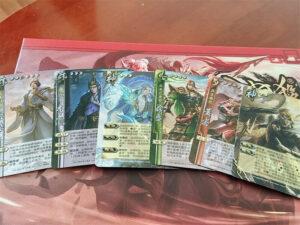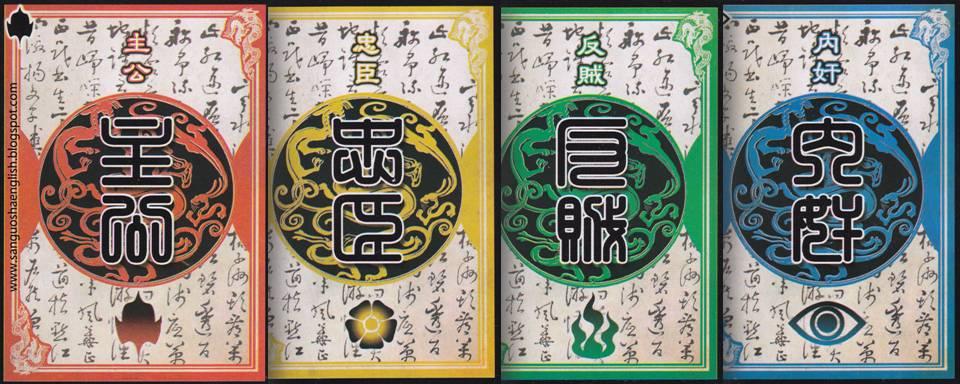
The game that I played with my friends was pretty complex; it’s a Chinese RPG card game called 三国杀, or in English, Game of Heroes: Three Kingdoms. The mechanics are incredibly simple but the dynamics created are what makes the game so fun and unrestricted. To provide the context of the world and the incentives of each role in the world, each player plays as one of 4 roles in an ancient Chinese war where they try to kill each other; there is the emperor and their servant, which make the good team; then there’s a team of thieves who’s main target and objective is to kill the emperor; and finally, there is the tyrant whose aim is to kill everyone first and then the emperor last to win.
In the game, there are also several different characters to choose from, all with their own powers and boosters that the player and others have the responsibility of keeping track of. Actions taken for each turn will heavily depend on who is the right player to attack in the moment based on when their powers are activated. In theory, this sounds complex, but after understanding it, it creates many strategies that players can take for the group and themselves, and also offers chances for players to make alliances among themselves (even within the role alliance). An added layer to the game is social deception since no one knows who is what role except who is the emperor, which creates fractures in trust even among the evil team (except for the tyrant who is a lone wolf).
In many ways, this game is very similar to our game concept since it was one of our main inspirations for it. There are also many differences between the two as well.
One mechanic that our concepts both have is allowing the player to do as few or as many actions as they want during their turn. A player, based on their own agendas, can choose to play no actions from their hand during their turn, effectively saving up their card wealth so that their next turn can cause more damage. They can play only some actions to might help propel them forward for later rounds. Or they might just play everything all at once and cause immediate damage to other players. This mechanic gives the player a lot of freedom in whatever strategy they are striving towards, which is something we wanted to incorporate. It also makes players more attentive to the actions of others and to get suspicious of players who play more reserved.
Another similarity regards the types of actions people can play. Other games allow players to play actions that only benefit themselves. In both our games, if drawn, players can put handicaps on other players or make other players take actions that set them back. Another similarity is that players must discard down to a certain number of cards in their hands so that the game remains balanced. A difference is between the exact number of cards allowed to be in hand.
Another mechanic that is similar is allowing players to choose their characters before the rounds. Each Character in both games have a different backstory, personality, objective and power. Giving these identities for the player to choose from allows the players to be more immersed in their role in the game. Our concept of tiger moms gives the player a choice of which kid they want to play with, depending on powers, the difficulty of their objectives, and if they resonate with that character.
As for differences, the biggest difference is obviously the world between the game: a Chinese war and Tiger moms competing to make their kid the greatest. Another difference is that there is no social deception in the game, and instead successful negotiations among players, where players can trade cards with each other, creating alliances.
Another difference is that in 三国杀, there are cards that act as equipment that players can play to their characters. This mechanic seemed unnecessary for our game.



